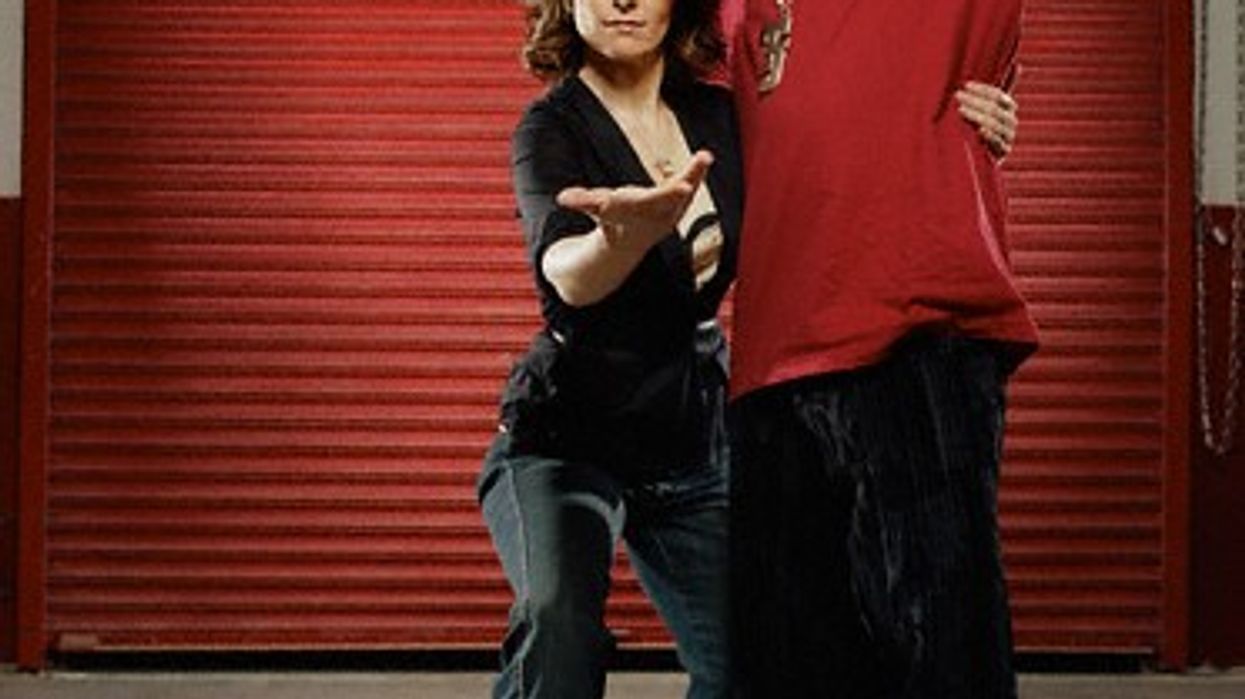Three-dimensional printers are getting a lot of hype at the moment. In February, MakerBot Industries started shipping its Thing-o-Matic desktop 3D printer, which, at just $1,225, "democratizes" 3D printing, allowing you to "live in the cutting-edge personal manufacturing future of tomorrow!" The same month, the typically restrained Economist headlined a story "Print me a Stradivarius: How a New Manufacturing Technology Will Change the World." Business Insider even called it "The Next Trillion Dollar Industry."
The idea, for those of you who aren't familiar with it, is pretty simple. You create a 3D design on your computer or download a premade blueprint. Then you press print. Your printer squirts materials out of a nozzle that is sort of like an ink jet printhead, and builds up the object gradually, one layer at a time. When it finishes and the object has cooled, you have a new thing. Not a picture of a thing, but the thing itself.
And people are already using the technology to print all sorts of things—pesticide-free plastic bug repellents, new ears, and videogame cars.
They're also printing food.
For example, both the BBC and the CBC have recently reported on the 3D food printer being tested at Cornell University's Computational Synthesis Lab (CCSL). So far, the team there have created miniature space shuttles made out of ground scallops and melted cheese, chocolate letters, and cubes of raw turkey and celery, mixed with hydrocolloids to create a gel.
Meanwhile, across the pond, tech company Bits from Bytes are collaborating with the University of the West of England to try to print mashed potatoes.
The somewhat underwhelming aesthetic results of these experiments do not discourage 3D food printing's proponents, who dream of the chance to rapidly prototype and tweak new flavor and texture combinations, the ability to digitally control nutrient intake and ensure food safety, and the possibility that, one day, your mom will be able to send you a slice of her apple pie over email. And, undoubtedly, if 3D food printers become as ubiquitous as personal computers, it will utterly change the way we think about food, as well as reshape the built environment, from kitchen design to supermarket layout.
To find out more about how these 3D food printers actually work and how they might change our lives, I talked to Marcelo Coelho, an industrial designer with MIT Media Lab's Fluid Interfaces Group. Last year, he and Amit Zoran released a series of concept drawings for a digital gastronomy project they called Cornucopia. Now, Coelho has created a prototype digital chocolatier—a personal, 3D candy printer. Our conversation is below.
GOOD: The last time we talked, in February 2010, you had come up with these concept drawings. Can you talk through the process of turning them into a working prototype.
Coelho: We started by looking at what was possible using real world technology. The biggest challenge in making a 3D food printer is controlling the food. We experimented with different types of ingredients and with different kinds of valve design. I’m definitely not a food engineer, so I went through a whole process of getting a better sense of the properties of the foodstuffs that I was working with and what sorts of devices have been invented to work with each of them on the industrial scale. I looked at a lot of books about the design of machines for food factories.
Eventually, I arrived at a prototype that combined chocolate and nuts in different amounts. The machine has a little carousel with two different types of chocolate and two different types of nuts—just regular chocolate, white chocolate, almonds, and walnuts, bought from a store. I designed a graphical user interface so you can just click on the food that you want and it gets added to the design. So, for example, you might click on the chocolate and a tiny little bit of chocolate gets added to that candy design. Then you might do a layer of nuts, and you keep selecting the amount and the arrangement of those layers. When you're done, you just hit the candy button, and the machine goes through the process of printing it out.
I really tried to show what happened while the machine was making the candy, so as the machine starts to extrude the chocolate and the walnuts, the graphic representation of the candy on the user interface also shows what’s happening—you see the layers appearing on the virtual candy as it's appearing on the physical candy. I think that's an important part of the process, so that people could see how the food is coming to be what it is.
GOOD: So do you actually have to design the whole candy before it even starts printing?
Coelho: No, you can do as much as you want, and then just hit the candy button and whatever you've created so far will get printed.
GOOD: That's good, because I can easily see how you would design something that looks good and then as it prints, realize, you know what, I want a little bit more chocolate…
Coelho: Absolutely. So you could print two layers of chocolate, stop and then put a marshmellow in the middle of this thing by hand and then print some more layers of chocolate and nuts. I think creating this symbiosis between the machine and the people using it is very important.
GOOD: When other people tested the prototype and printed candy for themselves, did they do things that you weren’t expecting with it?
Coelho: I think the most surprising things was how much people liked their candies. They tasted really good. I was a bit surprised. I don’t know why, because we used good chocolate and real nuts and we were just depositing them in different ways, but I thought the candy was going to taste funny. I also think people were just fascinated by the idea of making candy. There’s a lot of creative space in candy design.
GOOD: One practical question: How do you keep the chocolate at the right temperature so it can extrude? Do you add something to the mix, or is it just melted chocolate?
Coelho: It’s melted chocolate, and there’s a hidden film that goes in the chocolate tube with a heating element and a thermostat, so you can heat it and then keep it at a steady temperature. The heating is more localized at the bottom, near the valve.
GOOD: How do you top it up?
Coelho: You just buy a bag of chocolate chips from the grocery store and tip it into the tube.
GOOD: Given that this is a prototype, what are some of the things you would need to refine before production?
Coelho: There are a few things. Right now, it takes about a minute for the candy to harden. We could speed that up by putting the entire machine inside a little chamber, for better temperature control. Another thing is that over time the valves start getting clogged and you have to take the whole thing apart. I would like it to be super easy to detach the valves and just pop them into the dishwasher. But each of these things is a separate and really hard design challenge.
It does work pretty well, but the next step is to build it so it works reliably for a long time and also combine this printing carousel with a plotter, so that we can not only control the type and amount of food that is dispensed, but also create lines with it.
GOOD: In some ways, what a device like this is doing is putting the tools that are already in a factory into people’s houses. What’s the interest and value, for you, in taking these industrial food processing techniques and building them at the scale of the home kitchen.
Coelho: There are several layers to it, but I think it all comes down to idea of giving people more information. I think of information in two different ways: one is just learning about what you’re eating and the second is actually becoming a part of the information design process or part of the food production process.
So you’re right: There’s plenty of stuff at the grocery store that is made in a factory using these kinds of extruding devices at an industrial scale. But most people have no idea what goes in to making them. I wanted to create a machine that would let people have more information about what they're eating and how it's made, and then, on top of that, also be able to make choices and design their own food.
GOOD: I could see some people looking at this and saying, "Why not just eat a bar of chocolate and some nuts? What’s the point in going through this whole 3D printing process?"
Coelho: That’s a good question, and it goes back to where this project started. I noticed that every aspect of the design world has been really affected by 3D printers, and people spend a lot of time talking about the idea of these machines being in everyone’s homes one day and how it will revolutionize everything. Those conversations made me realize that right now, the only thing that most people really design or create in their own homes is the food they cook. For example, my parents never make anything ever—but they cook frequently, if not every day. So I thought that food would be a really interesting place to explore the potential of domestic digital design.
GOOD: So a 3D food printer is actually a vehicle for people to take something that they’re familiar with doing, which is cooking, and introduce them to design thinking.
Coelho: Exactly. I think it also unleashes an infinite amount of possibilities. When you think about the kinds of things you can do on your computer in terms of design—simple things, like a Photoshop blur filter, for instance—it makes you wonder what a blur filter for food would be? What would it do and taste like? I think there's a really exciting opportunity to give people the same sort of one-button design tools they have on their computer, but for food.
GOOD: Did you build this prototype just to experiment with the ideas, or are you interested in developing it into something I could actually buy at Williams Sonoma?
Coelho: I would love to take it into production! I actually think designers have a big responsibility to explain what's possible and what's not possible, as well as just coming up with creative ideas. When Amit and I put out our concept designs this time last year, people wrote about them as if they were real, and that was really frustrating to me. I had never created concept renderings before, and it made me realize the responsibility of creating a fantastically realistic image—people look at it and think it exists. I think it's important to make that distinction between concept and reality clear because it affects society's reaction to new technologies, as well as what kind of research gets funded and what doesn’t.
Anyway, that's the part of the design process that I really like, the part where you actually try making it and see what works and what doesn't.
Images: (1) Digital chocolatier, Marcelo Coelho, MIT Media Lab; (2) Scallop and cheese spaceshuttle, Cornell University/French Culinary Institute, via the CBC; (3) Turkey and celery square, photo by Dan Cohen, via the BBC; (4) Printed mashed potatoes, via Fabbaloo; (5) Digital chocolatier, Marcelo Coelho, MIT Media Lab; (6) Graphical User Interface, Marcelo Coelho, MIT Media Lab; (7) Graphical User Interface, Marcelo Coelho, MIT Media Lab; (8) Digital chocolatier, Marcelo Coelho, MIT Media Lab; (9) Digital chocolatier, Marcelo Coelho, MIT Media Lab; (10) Concept drawing for a digital fabricator, Marcelo Coelho, MIT Media Lab.









